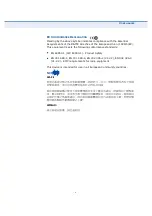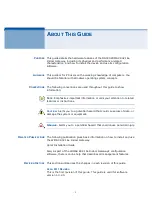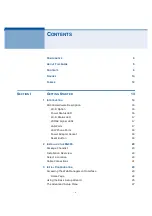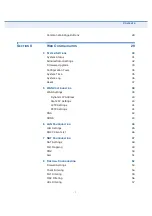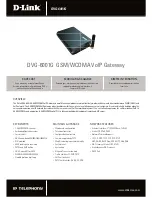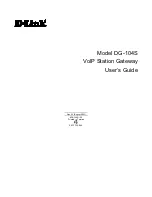
Ù
ÔÑÍÍßÎÇ
99
×ÛÛÛ èðîòïê
Û
The WiMAX standard that provides mobile broadband wireless access using
Scalable Orthogonal Frequency Division Multiple Access (SOFDMA).
×Ð ß
ÜÜÎÛÍÍ
The Internet Protocol (IP) address is a numerical identification assigned to
a device that communicates in a network using the Internet Protocol.
×ÍÐ
Internet Service Provider. A company that offers an access service that
connects customers to the Internet.
ÔÛÜ
Light emitting diode. Used for indicating a device or network condition.
ÔßÒ
Local Area Network. A group of interconnected computer and support
devices.
ÓßÝ ß
ÜÜÎÛÍÍ
The physical layer address used to uniquely identify network nodes.
ÓÍóÝØßÐÊî
Microsoft
s version 2 of the Challenge-Handshake Authentication Protocol.
Introduced by Microsoft with Windows 2000, MS-CHAPV2 (defined in RFC
2759) provides mutual authentication between peers using user names
and passwords.
ÑÜÚÓ
Orthogonal Frequency Division Multiplexing. The air interface defined for
IEEE 802.11g Wi-Fi. OFDM allows multiple users to transmit in an allocated
band by dividing the bandwidth into many narrow bandwidth carriers.
ÎÖóìë Ý
ÑÒÒÛÝÌÑÎ
A connector for twisted-pair wiring.
ÎÍÍ×
Receive Signal Strength Indicator. A measurement of the strength of a
received wireless signal. The higher the RSSI value, the stronger the
received signal from the antenna.
Î
ÑßÓ×ÒÙ
The process where a WiMAX subscriber can move onto another operator
s
network while maintaining a continuous connection.
ÍÑÚÜÓß
Scalable Orthogonal Frequency Division Multiple Access. The air interface
defined for mobile WiMAX. SOFDMA is a multiple access method that allows
simultaneous transmissions to and from several users, employing a
subchannel structure that scales with bandwidth.
Í
ÛÎÊ×ÝÛ
Ð
ÎÑÊ×ÜÛÎ
See
Internet Service Provider
.



























